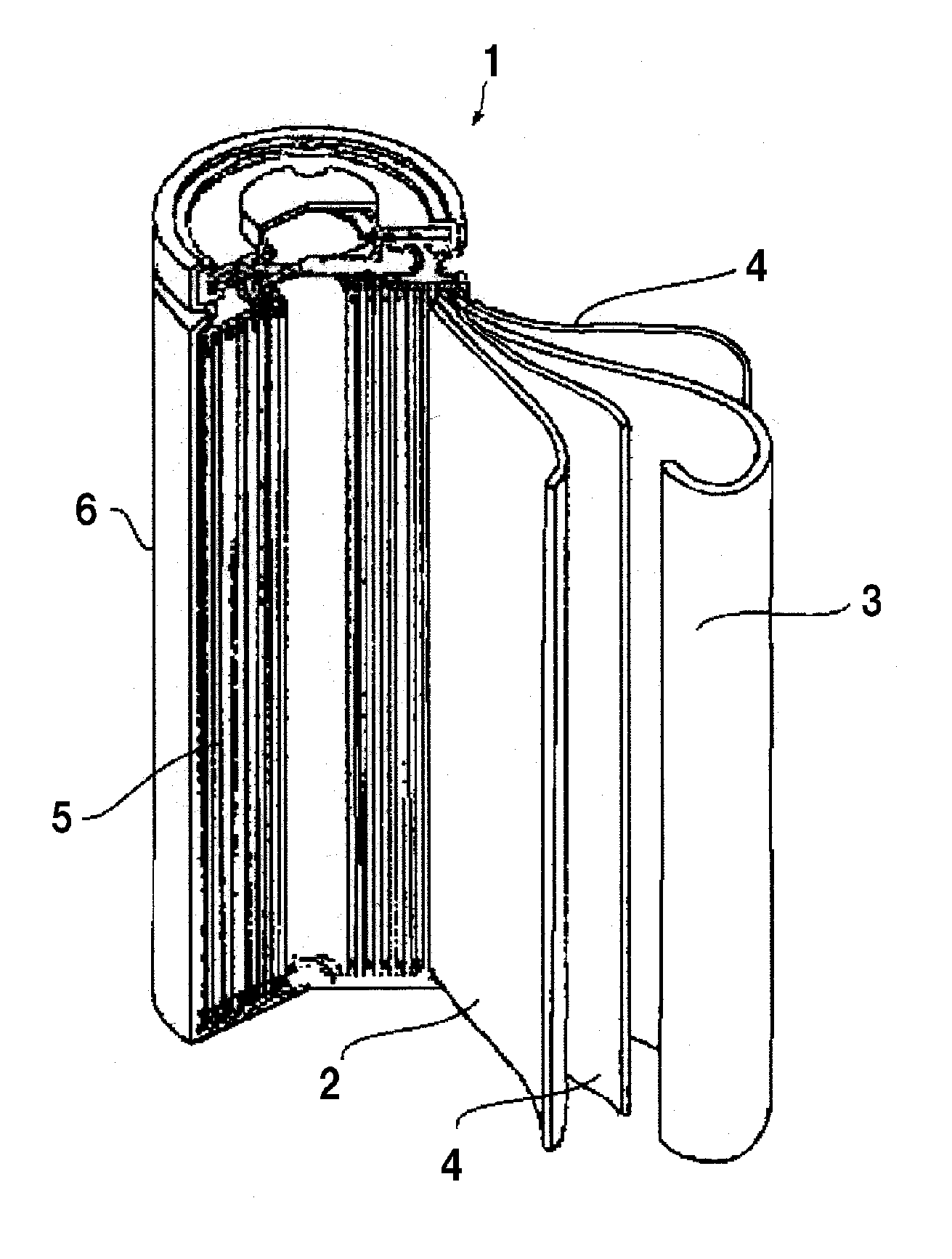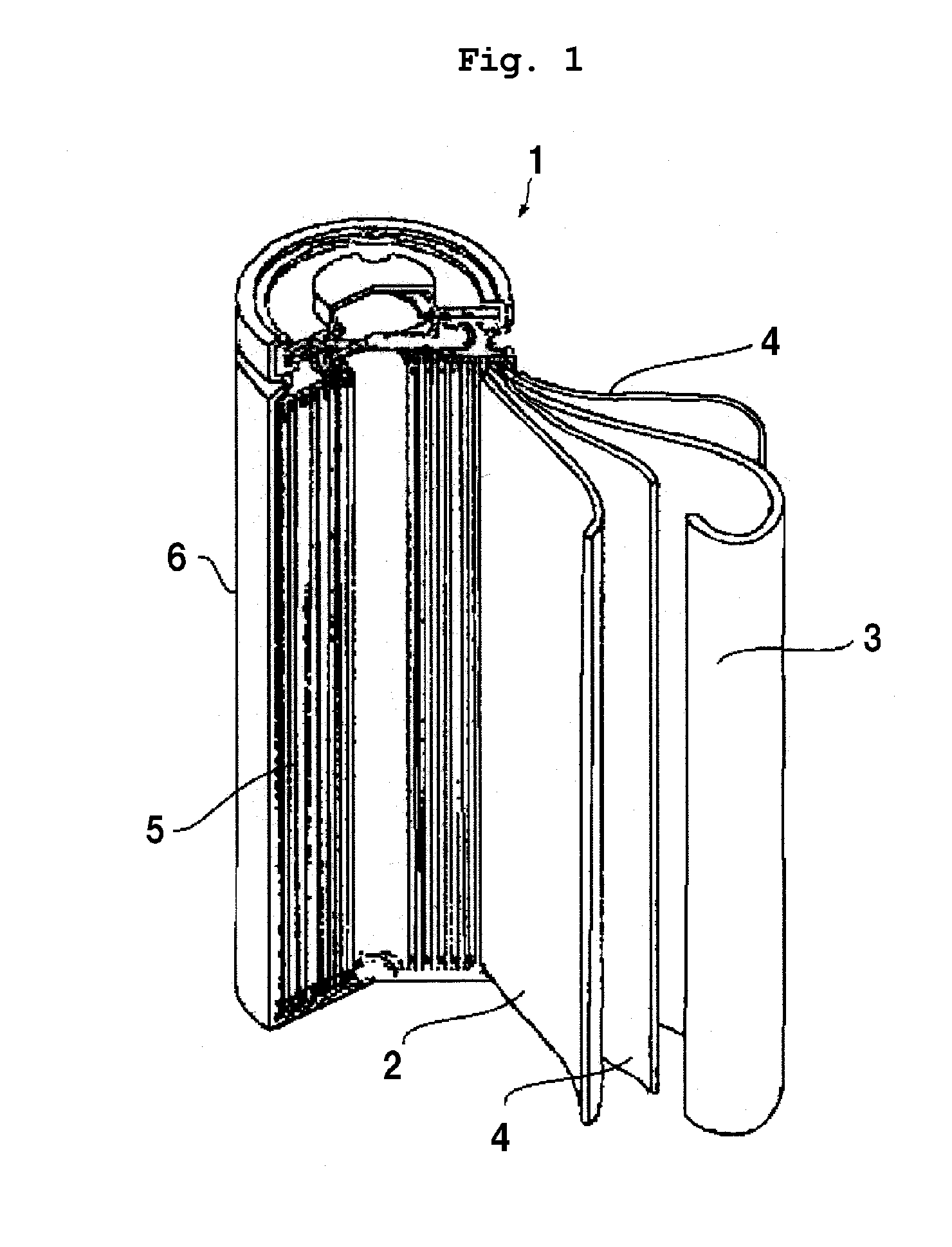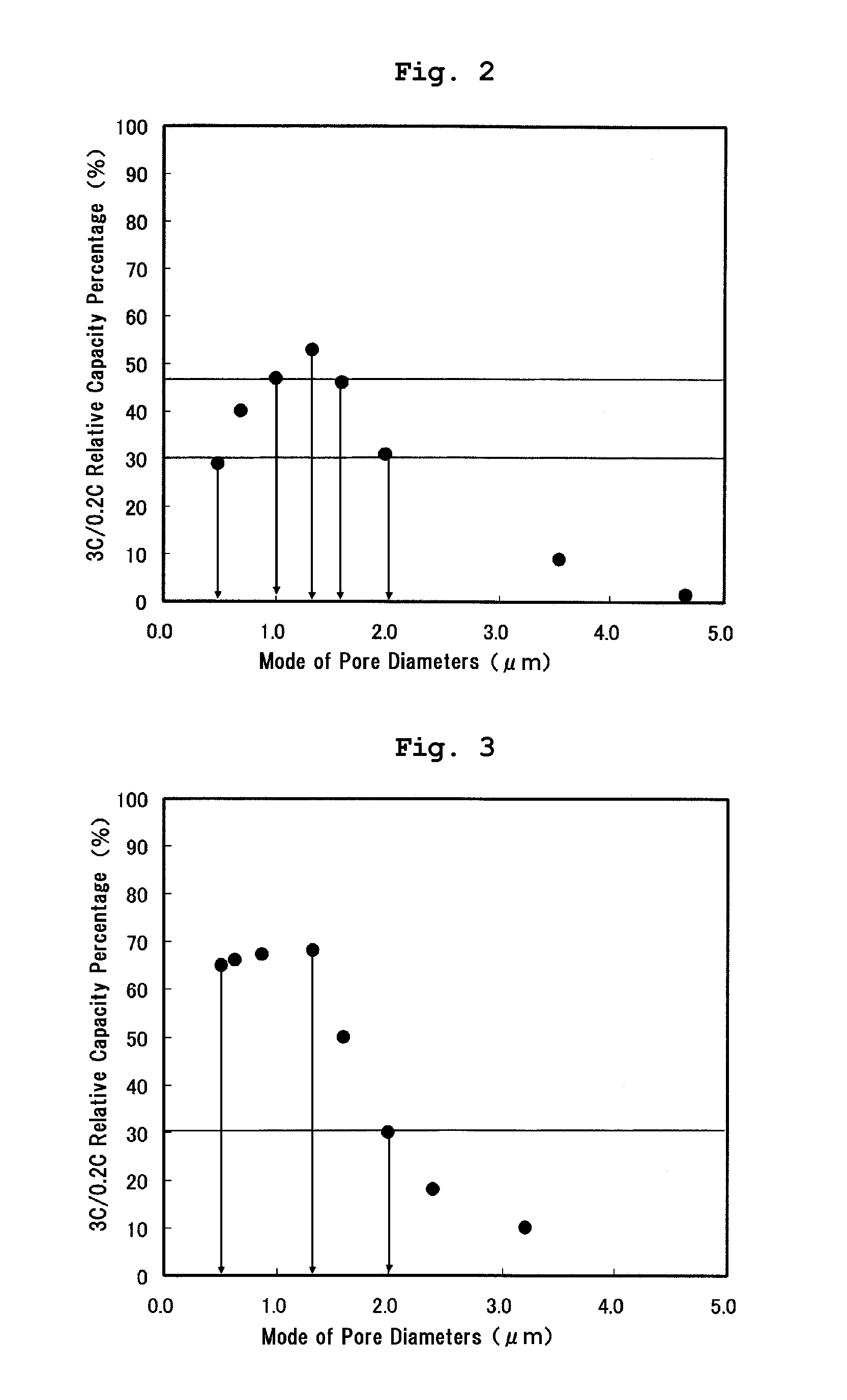Lithium ion secondary battery
- Summary
- Abstract
- Description
- Claims
- Application Information
AI Technical Summary
Benefits of technology
Problems solved by technology
Method used
Image
Examples
example 1
[0032]In Example 1, as shown in Table 1 below, the phosphazene compound (made by BRIDGESTONE CORP., Product Name: Phoslight (Registered Trademark), liquid state) of a flame retardant was mixed at 15 volume % into the non-aqueous electrolyte of which lithium salt density is 1.0M. The positive electrode mixture was formed by mixing 4 wt % of the phosphazene compound (made by BRIDGESTONE CORP., Product Name: Phoslight (Registered Trademark), solid state) of a flame retardant, 84 wt % of lithium manganate powder of a positive electrode active material, 5 wt % of scale graphite and 7 wt % of PVDF. A mode of pore diameters formed at the positive electrode mixture was measured by using a mercury porosimetry (SHIMADZU CORPORATION, Autopore IV 9520) to manufacture the lithium-ion secondary battery 1 in which the mode of pore diameters formed at the positive electrode mixture was set to 0.5 μm. In the same process, a plurality of lithium-ion secondary batteries of which mode of pore diameters...
example 2
[0033]As shown in Table 1, in Example 2, a plurality of lithium-ion secondary batteries of which mode of pore diameters formed at the positive electrode mixture is different were manufactured in the same manner as Example 1 except that the non-aqueous electrolyte of which lithium salt density is 1.5M was used. The modes of pore diameters at the positive electrode mixture in these lithium-ion secondary batteries were 0.5 μm, 0.6 μm, 0.9 μm, 1.3 μm, 1.6 μm, 2.0 μm, 2.3 μm and 3.2 μm, respectively.
example 3
[0034]As shown in Table 1, in Example 3, a plurality of lithium-ion secondary batteries of which mode of pore diameters formed at the positive electrode mixture is different were manufactured in the same manner as Example 1 except that the non-aqueous electrolyte of which lithium salt density is 1.5M was used and 2 wt % of the phosphazene compound was mixed to the positive electrode mixture. The modes of pore diameters at the positive electrode mixture in these lithium-ion secondary batteries were 0.5 μm, 1.0 μm, 1.3 μm, 1.9 μm, 2.0 μm, 2.2 μm, 2.8 μm and 3.0 μm, respectively.
PUM
 Login to View More
Login to View More Abstract
Description
Claims
Application Information
 Login to View More
Login to View More - R&D
- Intellectual Property
- Life Sciences
- Materials
- Tech Scout
- Unparalleled Data Quality
- Higher Quality Content
- 60% Fewer Hallucinations
Browse by: Latest US Patents, China's latest patents, Technical Efficacy Thesaurus, Application Domain, Technology Topic, Popular Technical Reports.
© 2025 PatSnap. All rights reserved.Legal|Privacy policy|Modern Slavery Act Transparency Statement|Sitemap|About US| Contact US: help@patsnap.com



